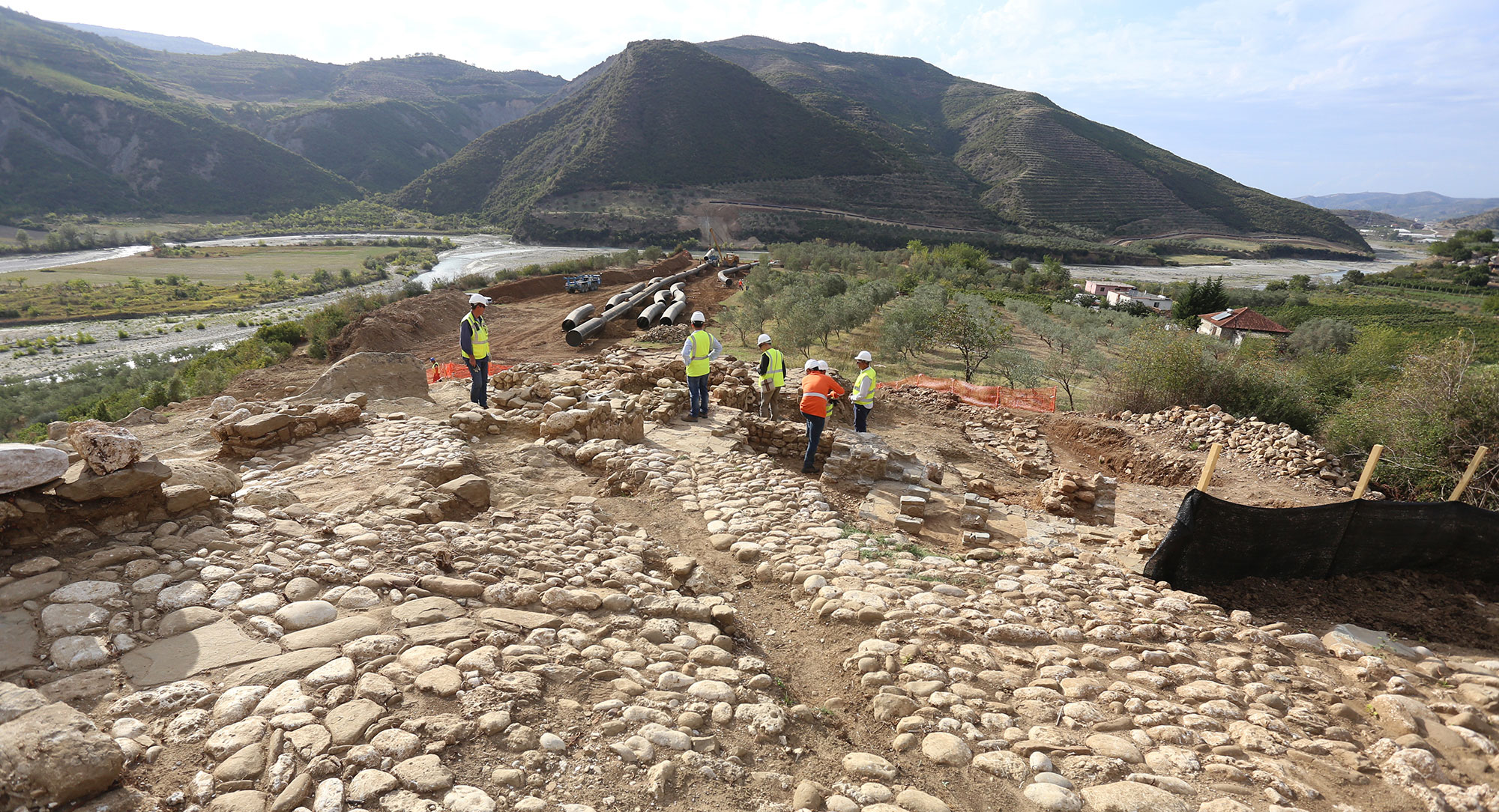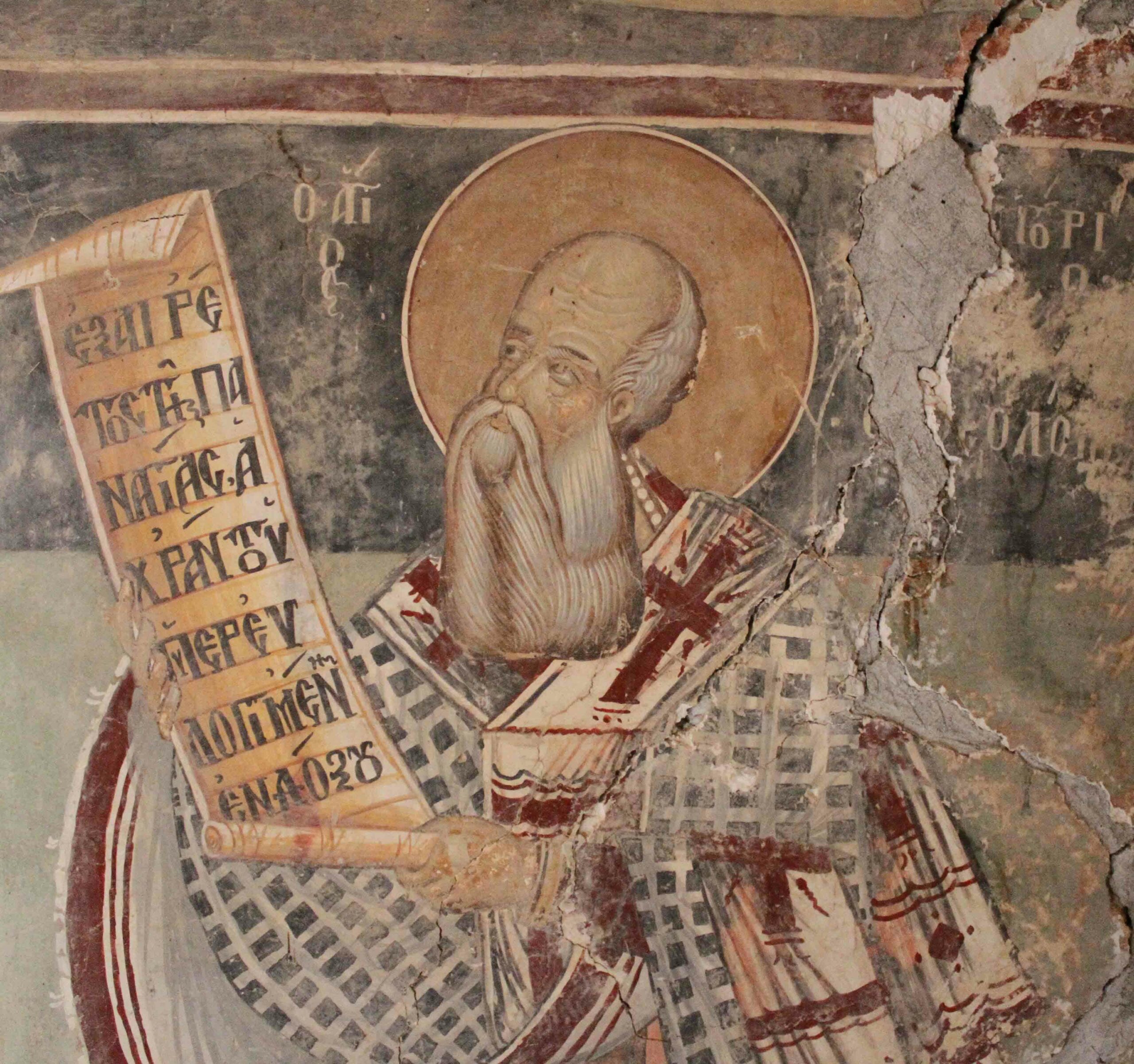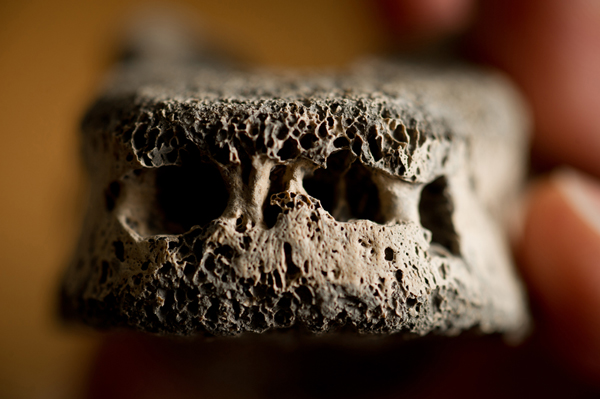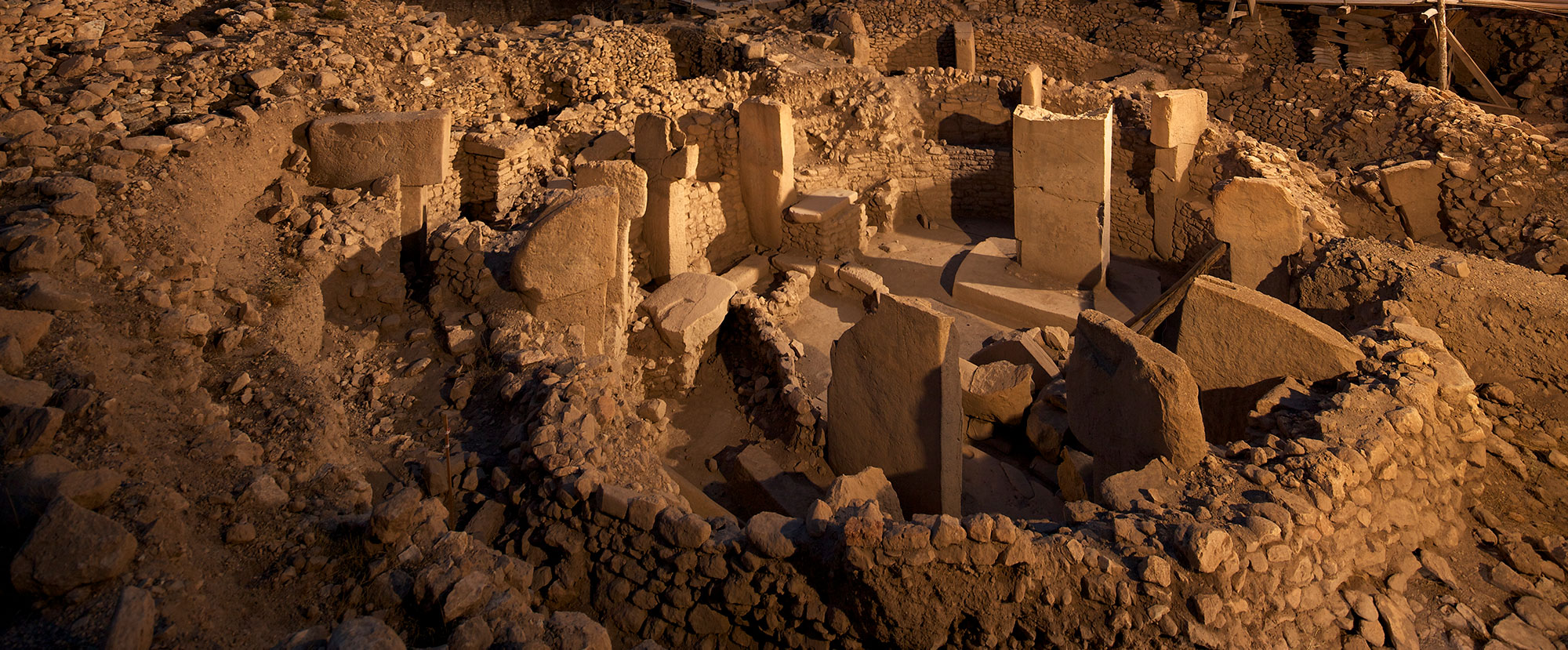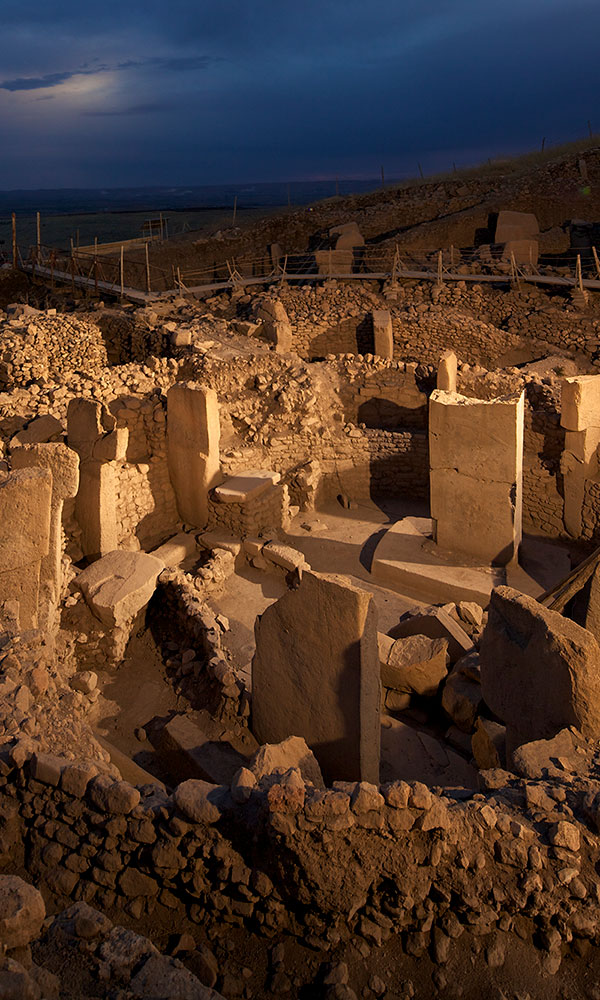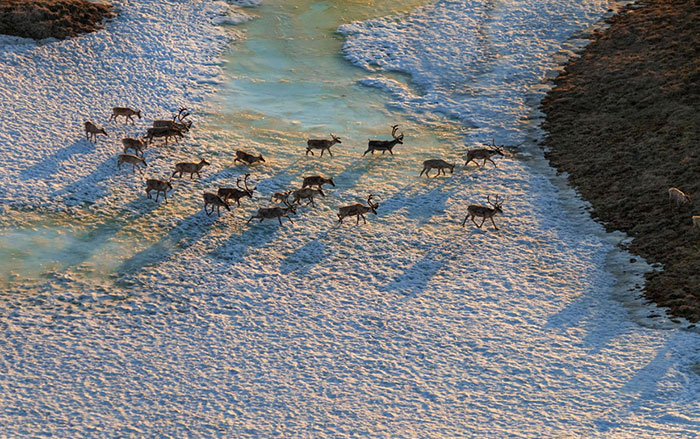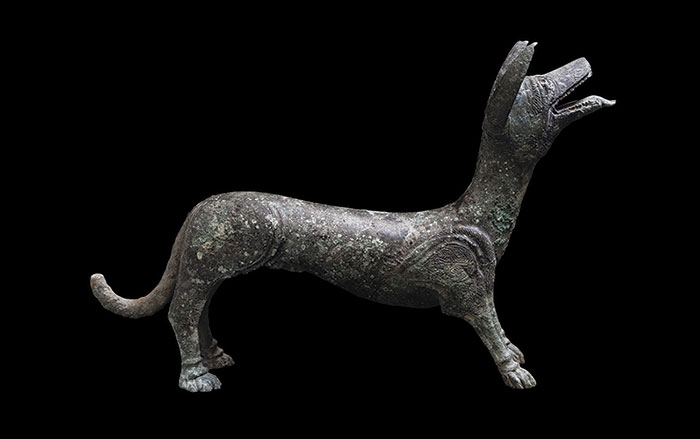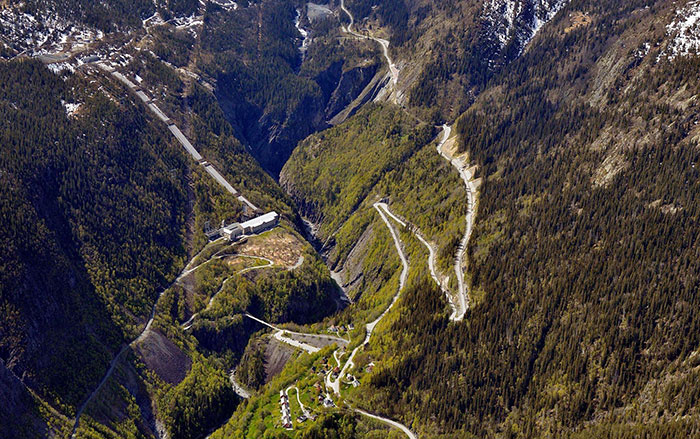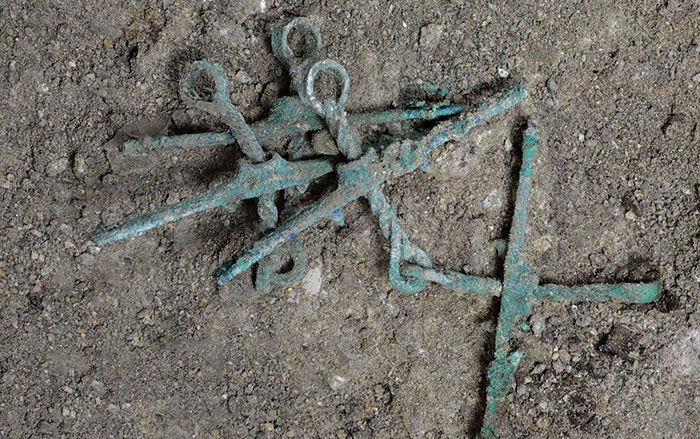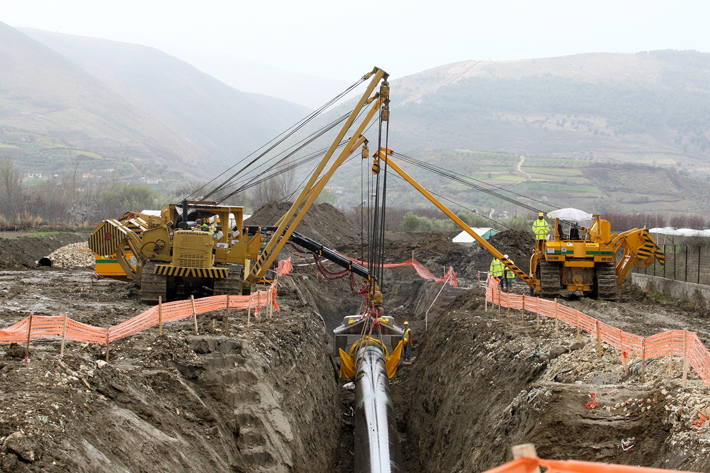
In modern Albania, the mélange of historical cultures is packed so densely they often seem to collide. The national E852 highway follows the same bank of the Shkumbin River as an ancient highway, the Via Egnatia, which was first traveled by Roman soldiers around 200 B.C. The road was modernized and maintained for centuries thereafter, and it became the main thoroughfare between Constantinople and the Adriatic, facilitating communication and trade between Rome and the eastern lands of the empire. Today, luxury Mercedes swerve between transcontinental bicyclists taking in the lush Mediterranean landscape and donkey carts hauling towering piles of forage. The route winds gently past medieval Ottoman Turkish bridges and white obelisks from the Communist era immortalizing partisan battles fought during World War II. Scrappy tobacco fields and mounds of hay and cornstalks line the route, planted and stacked by hand, much as they have been for centuries.
This primary ancient east-west artery of the Balkan Peninsula parallels, just to the south, another major European infrastructure project, one being built today: the Trans Adriatic Pipeline. The project, known as TAP, is laying 545 miles of pipe through northern Greece and Albania and under the Adriatic Sea, connecting existing Italian and Turkish pipelines to deliver Caspian gas to Europe by 2020. Perhaps counterintuitively, the massive construction project looks set to give an enormous boost to the study and preservation of Albania’s cultural heritage. During the Cold War, the hard-line Stalinist regime kept the country one of the world’s most isolated, and now this Maryland-sized country of three million is one of Europe’s poorest.
TAP’s resources are enormous by local standards—and could turn out to be the single greatest injection of money and know-how for archaeological exploration ever seen in Albania. The overall budget for TAP is $5.3 billion and about a quarter of the pipeline’s total length will sit in Albania. Lorenc Bejko, a prehistorian by trade who is the head of the archaeology department at Tirana University and a senior cultural heritage adviser for TAP in Albania, estimates that ordinarily the annual spending by all Albanian institutions combined on archaeological fieldwork doesn’t surpass $100,000. According to the project agreement, all management of the impact on Albania’s cultural heritage—including construction monitoring, excavation, preservation, development of management plans, scientific analysis, and even scientific publications—is controlled by Albanian government institutions and paid for by TAP. These activities are worth millions of dollars.
The odd geographical focus of the intensive TAP-funded archaeological work—a lateral route across the country 133 miles long, 124 feet wide, and typically a foot deep—coincides with the so-called right-of-way zone where the pipe will be buried. A rich variety of unrelated and unexpected ancient sites is being uncovered there: Neolithic settlements from Europe’s earliest farmers, along with Roman, Byzantine, and Ottoman sites. Turan, a site used for almost 2,000 years, yielded one of the oldest known cemeteries in Albania, dating back to 700 B.C. Ottoman cemeteries have also been found. And a picturesque hilltop settlement near the village of Peshtan, inhabited from the early Byzantine to the late Ottoman periods, has a cobbled street connecting a Turkish bath, a sixth-century Christian church, and several substantial houses with views of the valley below.
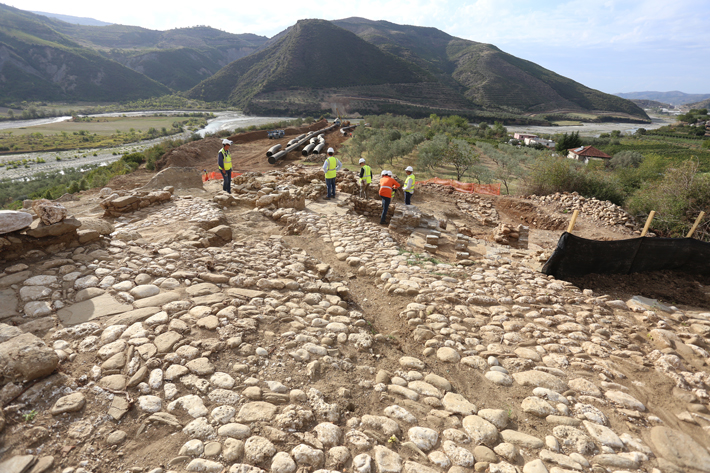
Empires could establish control over distant lands only when the roads were safe,” explains Bejko, traveling on the former Via Egnatia to visit project sites along the pipeline’s route. He says the road was strategically important for the postal service of the Roman Empire and expects road stations to be found someday. “When the road is in disarray,” he says, “there is no central authority.” Shortly after, as if on cue, the TAP driver has to slow the car abruptly as a man in a green road-maintenance vest sweeps up fallen rocks using tree branches bent like a broom.
Visitors to the largest excavation along the pipeline, near the city of Korca, will be struck by the magnitude of the work. A metal structure provides shelter for the basketball court–sized dig area and the 27 researchers working there—a significant burst of archaeological energy in a country with a total of some 100 professional archaeologists. In stark contrast to most of Albania, which doesn’t have many rules, here there is structure. There are clearly demarcated boundaries, high standards, and strict procedures: hard hats, steel-toed boots, safety vests, and eye protection, since it’s an active construction site as well as an excavation.
During the summer of 2017, young archaeologists working here under the direction of Iris Pojani of the University of Tirana and lead archaeologist at Abkons, the firm contracted to provide archaeological services to TAP, were monitoring construction activities when ceramic pieces were first spotted in the soil. Suspecting that more cultural materials would be found, Pojani stopped the construction work. After six weeks of full-time excavation—a nearly unheard-of investment in archaeological study in Albania—archaeologists uncovered a Neolithic settlement, with buildings, ceramics, arrowheads, and a skeleton. “The main challenge we are now facing is keeping a balance between [economic] development and science,” says Pojani.
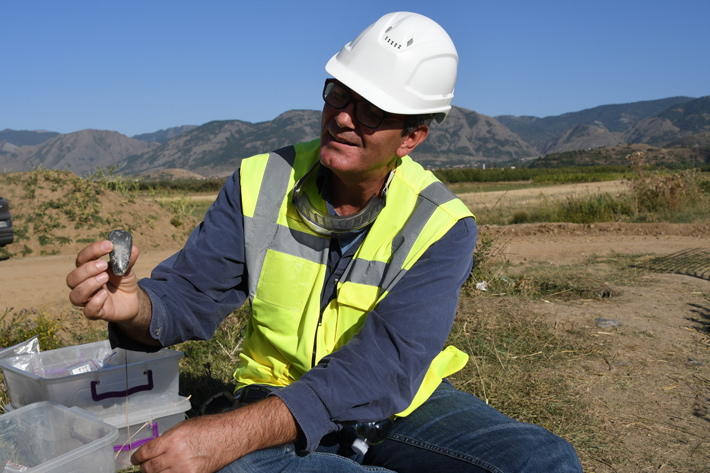
Reflecting on the site, Bejko says, “In other digs, you can’t explore such a large area. It’s expensive, and traditionally, the expectation is of one or several five-by-five-meter [16-by-16-feet] trenches, which is nothing compared to this one.” He adds that it is not only bigger, but also far more sophisticated than most previous excavations, with, for example, a complex dewatering system to keep it dry. Normally, Albanian archaeologists have to bail groundwater out of their work areas with buckets. “We want to make a plan of the settlement and the internal space organization of the huts,” Bejko says. “Hopes are really high here.”
He is particularly excited about the discovery of a Middle Neolithic structure about 23 by 10 feet, large by the period’s standards. “Usually Neolithic huts are very small and the entire family lived in a very restricted space,” he says. “We don’t know why this one is so much bigger. It was probably some kind of central building.” Further excitement surrounds the excavation of fairly well-preserved human remains, also from the Neolithic. The skull and shoulder are inside the trench into which the pipe will be lowered. The remainder of the skeleton lies outside, so the excavation and documentation will require extending the trench. Abkons archaeologist Kiara Xhelili says, “Maybe it was some kind of ritual burial. We know the person was young because of the teeth. They are well preserved and not used very much. They didn’t eat any candies.”
According to Bejko, this is only the fourth Neolithic skeleton ever discovered in Albania. There were no formal cemeteries at the time, and all four people were found buried under their huts. “You live all your life in one place and when you die you are buried in your house,” he says. “This connection to your house is one of the earliest examples of domus, or household, in human history. This single-phase site, from the Middle to Late Neolithic, will help us understand the kinds of choices settlers made and why, and to learn about their architecture. Finding skeletons will help us understand a little more about their individual lives, not just generalizations.”
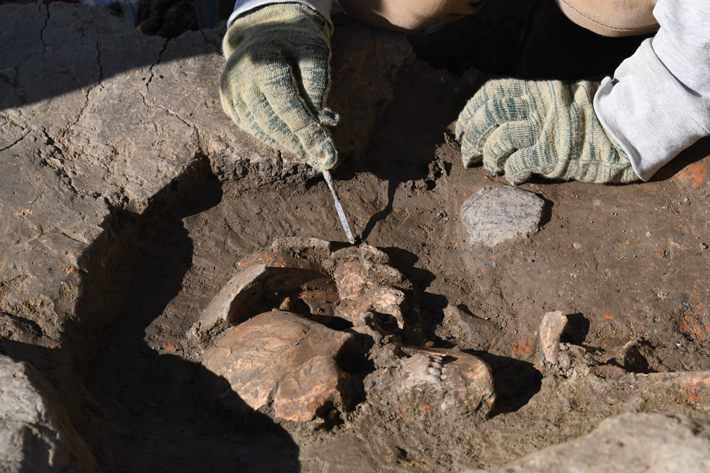
One of the most interesting archaeological discoveries thus far along the route is the settlement of Turan, whose cemetery contains burials spanning some 2,000 years. Located in the middle of a windswept plain of dried mud, today it’s not much to look at.
After human bones first appeared in the area, archaeologists ordered a work stoppage. They had soon uncovered around 120 skeletons tightly packed about four inches apart from each other in a small pipe trench just a foot below the surface. While the bones haven’t been dated yet, archaeologists believe they are from the 1600s or 1700s, and possibly even the 1800s. But directly beneath them, they identified prehistoric burials believed to date back to 700 B.C. “We have found a number of tumulus burials from that period in this area but this is the first flat cemetery we have ever seen in the Korca Basin,” says Bejko. He adds that this important discovery needs further interpretation. Burial artifacts include pottery from more cosmopolitan Greek city-states, perhaps Apollonia on the Adriatic, but also locally made pottery designed to look like “trendy” imports.
Archaeologists hope that the burials will help answer questions about who the people were and their relationship to other settlements. While this area was less socially diverse than settlements to the west where Greek colonies were already established, people here had fertile land for agriculture and engaged in trade. “These guys are much more connected to neighboring or even more distant communities. Even those who couldn’t afford imported goods were able to imitate them,” Bejko says. The cemetery was excavated and studied during the spring and summer and then reburied and covered with mats so that the 40-ton pipe-lifting machines could cross over it. In the end, the pipeline’s path was adjusted to go around the site.
Back at the TAP personnel camp, construction workers and project managers live in reconfigured shipping containers that are surprisingly comfortable and quiet. TAP has strict rules about everything: access to the site, equipment, eating, mandatory safety training, and the taking of photos inside the compound. What might seem a bureaucratic headache elsewhere creates in Albania the unfamiliar yet comforting sensation of a systematic approach, of things being done the right way. After dinner, crew members enjoy one of the last warm nights of late summer by playing volleyball. Sitting at a plastic table, Bejko explains how “development-led archaeology” has transformed the field into a viable profession in Albania and provided financial stability for heritage preservation. “The only way to make archaeology relevant is to link it to economic development, in a sustainable way, and to tourism and education,” says Bejko.
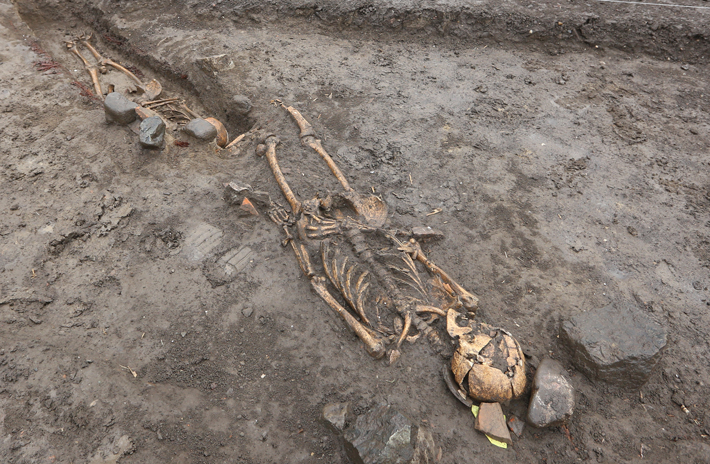
While working at the culture ministry in 2007, Bejko helped draft and implement Albania’s first modern law for cultural heritage, which created mandatory impact assessments and mitigation plans for construction projects in the country. Similar to the systems of funding archaeology in Italy, Germany, and the United Kingdom, Bejko says the new system creates sustainable workplaces for archaeologists and funding for preservation while ensuring that any impact on cultural heritage from construction is mitigated.
Albania only became independent from the Ottoman Empire in 1912, and archaeology was not actively pursued as a scientific endeavor until after the Communist takeover following World War II. Bejko says the political agenda in the years from 1945 to 1991—tightly connected to building the relatively new Albanian nation—focused on shaping the scientific data to proclaim the Ilyrians the most ancient and greatest ethnic and political entity in the region, and the earliest ancestors of the Albanians. “When the Communist system collapsed, I, along with other people of my generation, were lucky enough to be among the first to educate ourselves in the West and make a difference here,” says Bejko. Under the old system, in which everything was planned and financed by the government, there was little funding or capacity for either research or preservation. Most construction in Albania was carried out without any effective oversight. One of the worst cases in the post-Communist era was the destruction of much of the ancient part of Durres (ancient Dyrrachium) on the Adriatic. When the city was modernized, there was no mitigation. No one will ever know how much was lost.
The new approach initially met great resistance from those who grew up under the old Communist regime, including Bejko’s former professors. He was accused of “privatizing” archaeology and had heated disputes with colleagues. Bejko recalls himself saying, “We are archaeologists. We are used to understanding context. So why do you ignore the social and economic context in which we operate? Archaeology is not isolated.” Eventually, his arguments won the day.
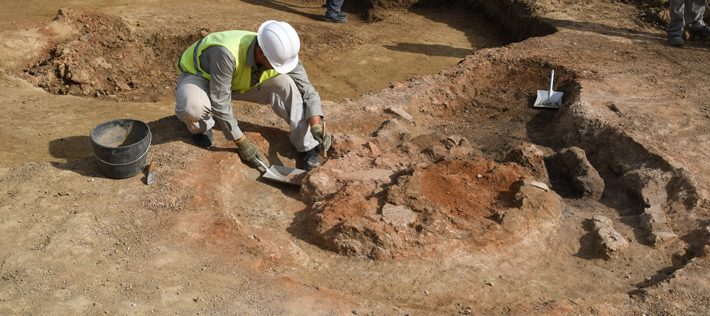
Heading west to Berat the next morning, the car passes through misty fields and valleys capped by yellow haze floating above land being burned before next year’s crops are sown. Simple village cafés, locals selling honey, peppers, and fruit, and shops displaying shiny plastic hubcaps line the road. While writing a text on his smartphone, Bejko observes wryly of emojis, “We are in danger of moving backward toward pictographic script.”
South of Berat, at a work site far from the public road, a team of three archaeologists is finishing off a study of two Hellenistic kilns. TAP’s pipes and equipment sit idly off to the side, as they have for the last three weeks. The organic material left by the two kilns looks like dark splotches in the earth the size and shape of igloos. “This is the remains of a production center, a workshop of some kind,” says Bejko. “The city was not far, so there was a demand for these kinds of products. This workshop was run by a smart local person. The clay here is very good for producing ceramics, and there is no problem finding wood for fuel. We want to understand the technology they used to fire the pottery, the amount produced, and the materials used,” he says. “Sometimes the small sites are very self-contained, but when you add them all up you get a complex landscape.”
Perhaps the most visually impressive site uncovered thus far is a steep terraced hill near the village of Peshtan. The team started work at the bottom of the hill, where the apse of a chapel was spotted during the final trenching investigation before construction began. Working their way up the slope, they uncovered a complex jumble of structures and terraces from a range of eras, cut through by zigzagging streets. The oldest buildings, at the bottom, are thought to have been built in late antiquity, around A.D. 550, while parts of the settlement were used during the Ottoman period, until the 1700s and possibly the 1800s. Workshops were found with storage jars and vessels. A Turkish hammam, or bath, has much of its sophisticated plumbing to transport and heat water still intact. Some of the ceramic pipes from the 1600s look modern and industrial, much like PVC piping you might find at Home Depot today.
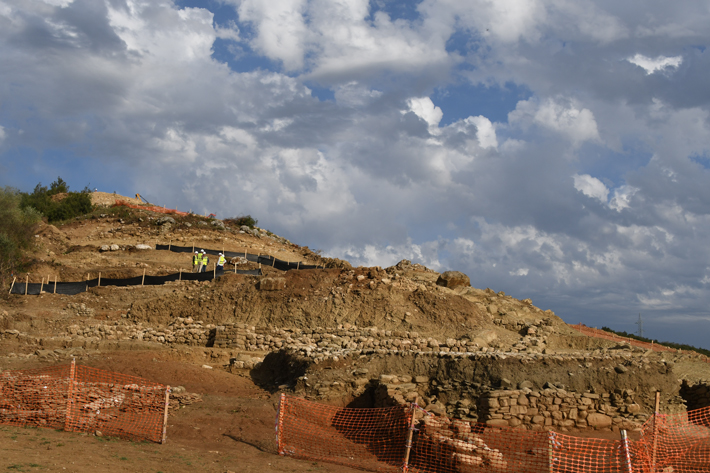
“We have seen terraces creating individual habitation levels,” says Bejko. “The collapse of the first building served as the terrace of the second building in the later period.” But while they are beautiful to look at, the terraces present special challenges for preservation because they are prone to erosion. The excavated section represents about one-quarter of the larger settlement. “We spent three months here with a large team. Ideally, if you want to expose the whole thing, it would take years,” Bejko says. “Now one asks, ‘Why is it necessary to expose the whole thing? It then becomes very difficult to maintain and preserve and manage. This section is probably enough to understand the basics of the settlement.’”
Albania is a poor but rapidly developing country. It attracted 4.7 million tourists in 2016—a 15 percent increase over the previous year. While most come for the beaches along the relatively undeveloped coast, for low-cost holidays, and for hiking and ecotourism in the mountainous region in the north, the number of visitors to cultural sites is growing even faster. Bejko stresses the importance of archaeology as both a resource to be studied and preserved, and a driver of economic development, but only in a sustainable context. In the case of Peshtan, for example, he says, “I understand the locals wanting to attract more visitors. But we need a stronger story to tie their visit to than just this one site.”
There is rafting on the Osum River nearby, and the archaeological team wants to involve the local Nurellari winery to develop a plan for any potential public archaeological site that could help draw tourists. But there is still no public road to the site—TAP is only leasing the private land until the construction work is finished. Making Peshtan a proper tourist destination would require jumping through a lot of administrative hoops. As more and more of Albania’s history is being uncovered along the TAP route, and as more and more archaeologists are being trained and working there, the country is still learning how best to tell the story of its ancient history.


